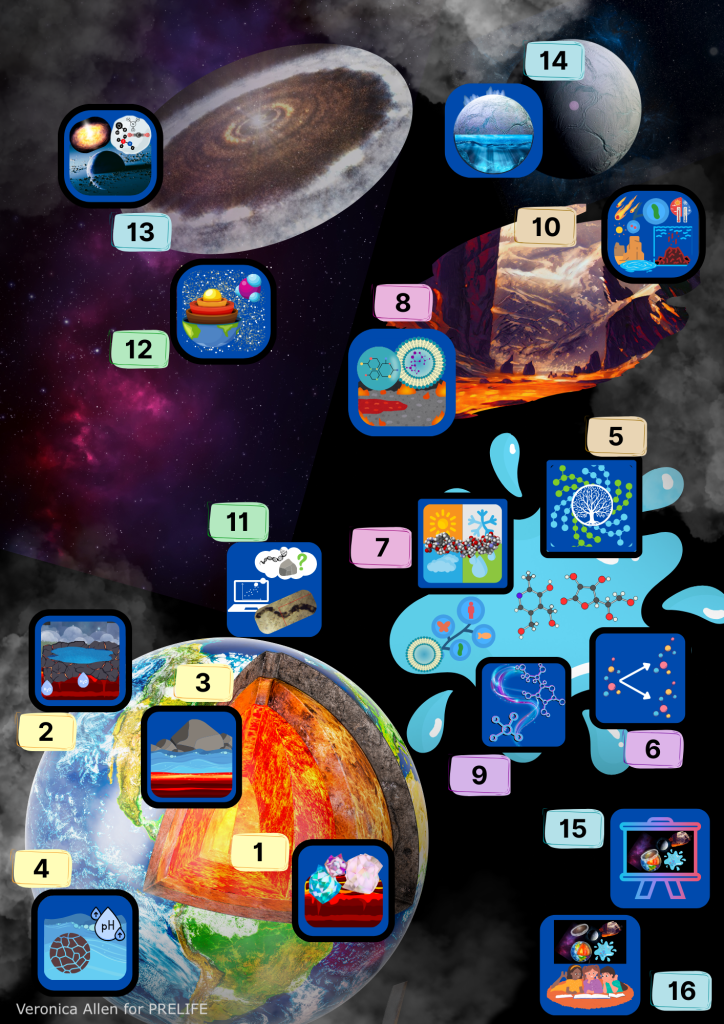
The origin of life remains one of the greatest mysteries in science. While many theories have been proposed, no single explanation has yet gained universal agreement. That’s where the PRELIFE consortium comes in. PRELIFE unites experts across a wide range of disciplines from astronomy, biology, chemistry, computer science, earth and planetary sciences, education, mathematics, to physics. Together we will explore two fundamental questions: How did life emerge on Earth, and how common are the conditions elsewhere in the universe?
To answer these profound questions, we will take an interdisciplinary approach, bringing together diverse perspectives to unlock new insights. But we believe this question is not just for scientists, it is for everyone. That’s why we will invite teachers, students, and the public to join us, through educational programs, artistic collaborations, and museum partnerships.
We’re searching for answers to life’s biggest questions, and we need your help. As part of the PRELIFE program we offer 15 exciting research projects. Are you a student with deep expertise in your field and a passion for crossing disciplinary boundaries? Each project connects different scientific fields, working together to unlock the secrets of life’s origins and take the public along. Are you in? Application deadline for all positions: June 10, 2025. Anticipated starting date between September and December 2025. For more information see the application links at the specific projects.

1. Application of Experimental Petrology to Understanding Hadean Zircon Geochemistry
The rock record from the Hadean period has been completely erased during subsequent Earth evolution, the properties of Earth’s atmosphere, surface, and crust during this key period for the origin of life can only be studied in three ways: (1) numerical modelling; (2) comparative planetology, in which comparisons are made with Moon and Mars on which part of the Hadean rock record survived; (3) interpreting the chemical composition of individual zircons (ZrSiO4) that, unlike the rocks in which they formed, were sufficiently resistant to erosion to survive from the Hadean until the present day. A key issue with all current models is that experimental data that quantify how the compositions of zircons vary as a function of the properties of the environment in which they form are scarce or completely lacking. In this PhD project, you will systematically determine the O, Zr and Si isotope fractionation factors between zircon and the surrounding melt from which these zircons grow, as a function of temperature, pressure, water concentrations, and melt compositions.
For more information, please contact the PhD supervisors below:
PhD supervisors: Dr. P Vroon (VU); Dr. E.S. Steenstra (TUD)
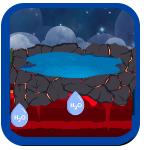
2. Numerical modeling and laboratory analyses of terrestrial magma ocean crystallization
The possible range of surface water levels and atmospheric composition on the earliest Earth are critical unknowns to assess the viability of surficial origins of life scenarios. The goal of this project is to constrain the oxidation state of the earliest terrestrial atmosphere in the Hadean right after magma ocean crystallisation and to quantify the amount of water trapped in the mantle and released to the surface, to assess the likelihood of photochemically triggering the formation of key prebiotic molecules, such as hydrogen cyanide, formaldehyde and cyanoacetylene. To do this, the PhD student will work under the guidance of dr. Lichtenberg and prof. van Westrenen to numerically simulate the coupled evolution of atmosphere, mantle, and water ocean formation during magma ocean crystallisation and perform high-pressure experiments on the solubility of key atmospheric species at chemically reduced (hydrogen- and iron-rich) conditions. The project combines laboratory experiments with numerical calculations, assessing the pathways for UV-light induced prebiotic chemistry in light of recent new constraints from petrology, geochemistry, climate science, and exoplanet populations. Additional information on the position can be found here.
For more information, please contact the PhD supervisors below:
PhD supervisors: dr. T. Lichtenberg (RUG); prof. dr. W. van Westrenen (VU)

3. Geodynamic exploration of emergence and evolution of Hadean paleogeography
Key for the study of the origin and emergence of life on Earth is to estimate what environments were present, and which chemical components, energy sources, and protection to degrading processes were available near and at the surface in the Hadean (4.6-4.0 Ga), for which time interval data are only available from a small number of zircons. Such physical and chemical properties and environments are closely tied to the emergence and evolution of geography: life cannot have existed directly after the Moon-forming impact and the ensuing magma ocean stage, and the rock record shows life had established itself in the Archean (4.0-2.5 Ga) when a solid crust, liquid water oceans, and land existed. This project aims to evaluate (i) what relief may have existed and on what timescales in the course of the Hadean, and (ii) using scenarios for ocean volume on the early Earth, whether land may have existed and what it could have looked like when life emerged. The PhD student will evaluate scenarios through numerical modelling of mantle dynamic and lithosphere (de)formation processes, using the range of possible Hadean compositions and mantle temperature evolution.
For more information, please contact the PhD supervisors below:
PhD supervisors: prof. dr. D.J.J. van Hinsbergen (UU), dr. C. Thieulot (UU), prof. dr. W.
van Westrenen (VU)
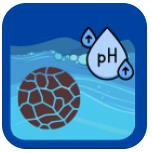
4. Constraining Hadean ocean geochemistry
In the project “Constraining Hadean ocean geochemistry”, you will work on the question how silicate weathering developed on the early Earth in dependence of continental growth and how geochemical mineral-water reactions controlled the composition of the first ocean. These processes involve forward weathering (dissolution of primary minerals) and reverse weathering (precipitation of authigenic secondary clays and carbonate precipitation). You will conduct laboratory flow-through experiments to simulate different ambient conditions and various fluid and mineral compositions. Identification of reaction pathways will be done via fluid and solid element as well as stable isotope (Si, Fe, Mg) analyses and thermodynamic modelling. Your findings will be complemented by the outcomes of the other PRELIFE projects, in order to answer the questions under which conditions life evolved on Earth and could these conditions occur elsewhere in the universe as well. Additional information on the position can be found here.
For more information, please contact the PhD supervisors below:
PhD supervisors: dr. S. Geilert (UU), dr. M.A. van Zuilen (Naturalis)

5. Theoretical Frameworks for Life as an Emergent Phenomenon of Complex Dynamical Systems
WP5 of the PRELIFE consortium takes a fundamentally novel approach to the origins of life by investigating life as an emergent property of complex dynamical systems. Rather than focusing on specific chemistries, this project aims to develop a general theoretical framework-rooted in information theory and complex systems science-to identify the minimal conditions under which life-like properties can emerge from simple reaction networks. The PhD candidate will work somewhere at the interface of informatics, theoretical physics, mathematics, and (bio)chemistry, building and analyzing models that quantify emergent phenomena such as information processing, self-organization, and adaptability in prebiotic systems. The project will address key questions: What information-theoretic or dynamical conditions are necessary or sufficient for the emergence of life-like behavior? How can these abstract models inform and direct experimental research in prebiotic chemistry? The outcomes will provide a new lens for understanding the transition from non-living to living matter, offering tools that can be applied across the PRELIFE consortium to connect theoretical predictions with experimental and observational results. WP5 is closely linked to other work packages focused on chemical networks, compartmentalization, and the emergence of evolutionary dynamics, where insights from WP5 can inspire and be input other modelling and/or experimental steps.
For more information, please contact the PhD supervisors below:
PhD supervisors: dr. R. Quax (UvA); dr. ing. A. Wong (UT)

6. Computational modelling of synthetic living systems
At the origin of life, chemical reaction networks of prebiotic compounds played an essential role. These networks likely began relatively simple but grew in complexity over time, forming dynamic molecular structures capable of essential functions of life such as self-replication, metabolism, and compartmentalization. Our understanding of how these functions emerged from prebiotic building blocks and their reactivity in different environmental conditions is only starting to unfold. While most biomolecules can now be synthesized under prebiotic conditions, organizing them into a self-sustaining, thermodynamically out-of-equilibrium living system poses a major challenge. This project aims to generate a synthetic living system that features multiple functions of life by modelling the emergence of metabolism and compartmentalization using a simple out-of-equilibrium peptide-based self-replicating system as a starting point. We are looking for a candidate with a master’s degree in (applied) mathematics, (bio)physics, (bio)chemistry, biomedical / life-sciences or a related field with a strong interest in computational modelling. The project will entail programming (scripting, Python etc.), solving coupled differential equations and carrying out molecular dynamics simulations on high-performance super-computers.
For more information, please contact the PhD supervisors below:
PhD supervisors: dr. B. Planqué (VU), prof. dr. P. Onck (RUG)
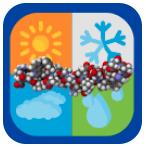
7. From building blocks to polymerisation on water-rich worlds
That water must have played a key role in the origin of life, is well accepted. The role and importance of other major aspects, such as meteoric impacts, presence of dry land, and/or harsher radiation is unknown. Their (changing) effects on the reigning conditions and change in chemistry may be crucial. If exogenous delivery of organics from space plays a crucial role, then life on other planets may have similar (pre-)building blocks at its origin. This also holds for the importance and (dis)similar behaviour of (non-)carbonaceous minerals. Their effects can lead to selectivity in complexification of these building blocks. At the rock-water interface, the rock can act as catalyst, sink, and provide important redox reaction mechanisms. This project aims to study key differences in the organic inventory and the polymerisation of (non-)terrestrial amino acids by performing experiments mimicking the ocean composition, with and without exogenous material and/or UV irradiation. We will do so by exploring how the rock-water interfacial system resulting from dry-wet cycling promotes the polymerisation of indigenous and exogenous amino acids to functional molecules. We will investigate the effects of (temporal) changing prebiotic conditions on the evolution of the organic inventory, their interaction, and complexification within a multi-component chemical mixture. By inducing the formation of higher order structures in water-based environments, we will study how building blocks can cooperate to converge to assemblies that display dynamic properties.
For more information, please contact the PhD supervisors below:
PhD supervisors: dr. ir. A. Petrignani (UvA), prof. dr. W. H. Roos (RUG)

8. Experimental Exploration of Protocell Formation on Early Earth
How did life begin on Earth? A key step in addressing this fundamental question lies in understanding the emergence of protocells—primitive compartments thought to have exhibited essential features of modern cells. These structures likely played a critical role in the transition from a prebiotic molecular “soup” to the earliest forms of life. A widely supported hypothesis suggests that protocells took the form of vesicles bounded by membranes formed through the self-assembly of amphiphilic molecules. However, the specific conditions under which protocells could have formed, and the stability of such structures in early Earth environments, remain poorly understood. This PhD project will experimentally investigate plausible pathways to protocell formation and evaluate their robustness under geochemically relevant conditions of the late Hadean Earth. The research will involve the design and implementation of laboratory experiments to test the emergence and properties of prebiotic compartments, using a combination of chemical, physical, and analytical techniques. Additional information on the position can be found here.
For more information, please contact the PhD supervisors below:
PhD supervisors: prof. dr. N.H. Katsonis (RUG), prof. dr. W. Kegel (UU)

9. Enhancing the evolvability of self-replicating molecules
Several chemical systems have been developed that show self-replication starting from relatively simple organic molecules and the first demonstration of rudimentary Darwinian evolution of such systems has recently been reported. However, the emergence of life requires more than only rudimentary evolution: the evolvability of self-replicating systems should increase and their evolution should eventually become open-ended. In this project it will be investigated experimentally how evolvability can increase. The trade-off between increasing evolutionary space and maintaining sufficient fidelity of replication will be investigated, with the aim of identifying the “Goldilocks zone” where evolutionary space is sufficiently large to enable evolutionary inventions, while error rates are sufficiently low, so that heritability of these inventions is not compromised.
For more information, please contact the PhD supervisors below:
PhD supervisors: prof. dr. S. Otto (RUG), dr. E. Spruijt (RU)
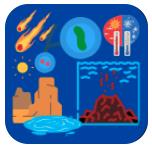
10. Simulating the Origin of Life: information transfer and the emergence of complex interactions in chemical self-replicators
Undergoing Darwinian evolution is a key trait of life as we know it. Furthermore, Darwinian evolution likely played an important role in the early development of life. Starting with so simple a beginning, it fuelled the complexification of prebiotic molecules into fully-fledged living systems. Classically, three criteria have been posited to define “Darwinian individuals”, i.e. entities capable of Darwinian evolution: inheritance, variation, and differential fitness. Inheritance implies a form of replication where information is transferred from one entity to another, but how exactly the first self-replicating molecules emerged with the capacity of information transfer, remains an open question. Hence, the question arises: how can information be faithfully transferred – with the possibility of errors in information transfer – to generate the variation necessary to drive complexifying Darwinian evolution? To satisfy the three criteria for Darwinian evolution, in this project we aim to model the functions that (pre-)biotic molecules need to fulfil for self-replication, assesshow these are affected by abiotic conditions, and investigate to what extent interactions among polymers may affect their self-replication (e.g., by parasitizing others as templates).
For more information, please contact the PhD supervisors below, and see the vacancy here.
PhD supervisors: prof. dr. R.S. Etienne (RUG), dr. B. van Dijk (UU), prof. dr. M. Egas (RUG)
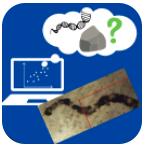
11. First evidence of life: determining biogenicity with novel tools from mathematics.
Distinguishing biogenic fossils from abiogenic features in the rock record is a central challenge for the study of the earliest traces of life on our planet. Our understanding of the origins of life could be greatly informed by correct interpretation of the environment and mode of life of the most ancient microfossils if we are able to correctly differentiate these from abiotic structures with similar morphological characteristics. Although different lists of qualitative biogenicity criteria have been suggested, debates surrounding the most ancient microfossils on Earth have remained unresolved. In recent years, a novel quantitative approach has been initiated with the aim to compare the morphology of biological microstructures with those of abiologic microstructures using morphological measurements and image/shape analysis. Very recently this approach has also been applied to characterise the morphology of self-assembled amphiphilic membranes. Topological data analysis (TDA) is an upcoming field at the intersection of data science and mathematics applying advanced techniques from the mathematical field of topology in the study of shapes in data. It has been successfully applied to pattern recognition and image analysis. In contrast with machine learning techniques, the methods in TDA are generally traceable rather than black-box and do not require vast amounts of training data. The aim of this project is to apply the TDA toolkit to build a quantitative biogenicity test for populations of morphological features. Additional information on the position can be found here.
For more information, please contact the PhD supervisors below:
PhD supervisors: dr. R. Hoekzema (VU), dr. M.A. van Zuilen (Naturalis)

12. Diversity of the composition of Earth-like planets forming in the habitable zone.
Although the formation of the Solar System has been thought to be relatively well-understood, the diversity of exoplanetary systems around other stars has revealed a number of new processes that affect the formation of terrestrial planets: a combination of a spread in initial conditions as well as stochastic evolutionary processes are likely essential to explain this. Since we do not have rock records from the Hadean to reconstruct the initial Earth volatile composition, we will use astrophysical forward modelling to derive a plausible range of volatile compositions that can be used as a starting point for the hot magma ocean phase of rocky planets. In this project, we will combine state-of-the art disc models with dust evolution, pebble accretion, migration, and N-body dynamics in realistic disc environments informed by observations, with a dynamically changing chemical composition using SHAMPOO, to model the formation of rocky planets in the inner regions of the disc and to keep track of their elemental volatile composition.
For more information, please contact the PhD supervisors below:
PhD supervisors: dr. N. van der Marel (LEI), prof. dr. I. Kamp (RUG), dr. S. Paardekooper (TUD)
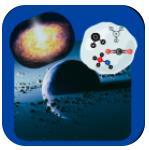
13. Inheritance versus reset: survival of organic molecules from molecular clouds to larger icy bodies
This PhD project will experimentally investigate how icy grains evolve after being incorporated into protoplanetary disks and evaluate the results through kinetic modeling. The aim is to uncover the physicochemical processes that connect the chemical composition of interstellar ice mantles with that of larger bodies such as comets and planetesimals. In the dynamic environment of planet-forming regions, radiation ranging from X-rays to UV and infrared photons drives the chemical evolution of icy grains. These processes alter the composition and structure of the ices, ultimately shaping the inventory of elements/organics available for planet formation. Using newly developed laboratory equipment, we will study two distinct types of ice-dust aggregates: well-mixed icy pebbles containing both volatiles and refractory grains, and layered structures with a refractory core and an ice mantle. These configurations may lead to entirely different chemical pathways. The scientific goal is to identify solid-state reaction networks in these structurally diverse systems and determine key reaction parameters under controlled conditions. The experimental findings will be analyzed by kinetic modelling, and the results will feed into protoplanetary disk models that assess the survival of organic molecules. This interdisciplinary project, combining laboratory work and modeling, will shed light on a fundamental question of our chemical origins: inheritance versus reset.
For more information, please contact the PhD supervisors below:
PhD supervisors: dr. K.-J. Chuang (LEI), prof. dr. H. Cuppen (RU)

14. The chemical composition of oceans at the edge of our Solar System
At the edge of our Solar System, icy moons such as Enceladus and Europa host liquid oceans under their thick icy crust. These oceans, considered amongst the most promising places to host extraterrestrial life, are distinctly not Earth-like, and should be studied to determine the extremes under which life might (not) have emerged and whether life could be present in our Solar System. While these subsurface oceans are inaccessible for the foreseeable future, occasionally liquids, including salts and organics, make it to the surface either through cracks or through high pressure vents called plumes. The following processes are occurring: (1) ocean water protrudes through cracks and flash freeze (2) droplets of liquid freeze when carried in plumes (3) gas phase water in the plumes nucleate and form icy grains. We propose to experimentally study these three processes bridging ocean’s material to the surface as well as the effect of radiation in changing the composition of the liquids/ice that made it to the surface. JWST observations of selected moons will be used to link their surfaces’ composition to their ocean contents and to ices in the interstellar medium.
For more information, please contact the PhD supervisors below:
PhD supervisors: dr. S. Cazaux (TUD), dr. M. McClure (LEI), prof. dr. P. Mason (UU)

15. ‘PRELIFE’: Teaching and Learning about the Origins of Life
Learning about the origin of life can spark curiosity and serve as an excellent context for understanding how science works, but it comes with a number of challenges: 1) students may face misconceptions and knowledge gaps and perceive the origin of life as a simple event, overlooking the inherent complexity in this field; 2) the large timescales involved result in limited and indirect scientific evidence which can be challenging for students to comprehend; 3) these first two points can result in scepticism or misunderstanding regarding the validity and reliability of the evidence gathered – specific attention to the scientific process (nature of science) in the classroom can help combat this. This project will develop new pedagogical approaches to facilitate the understanding of concepts relevant to the origin of life, and the nature of science, in various educational contexts. Specifically, the new pedagogical approaches will centre around the use of hands-on (classroom) experiments, the principles of Nature of Science and the construction of knowledge representations. This position will be advertised in October 2025.
For more information, please contact the PhD supervisors below:
PhD supervisors: dr. J. Holt (AUAS, NOVA, UvA), prof. dr. ir. I. L. ten Kate (UU)


